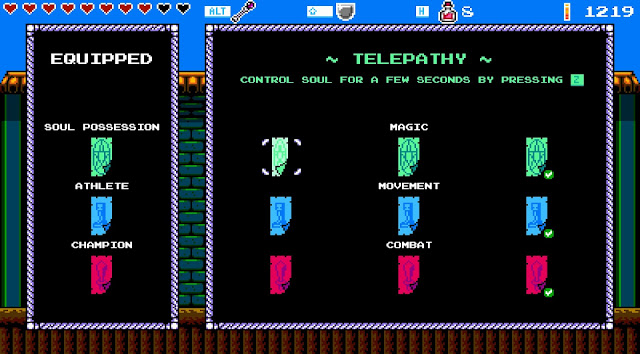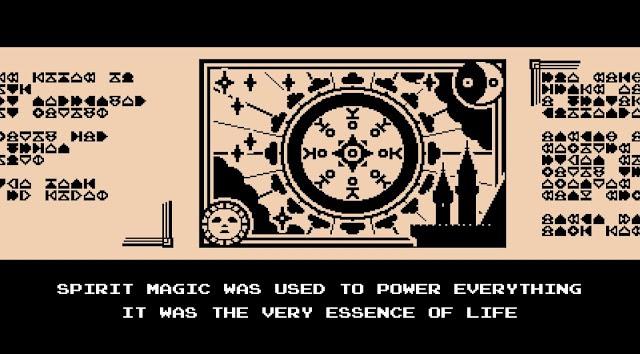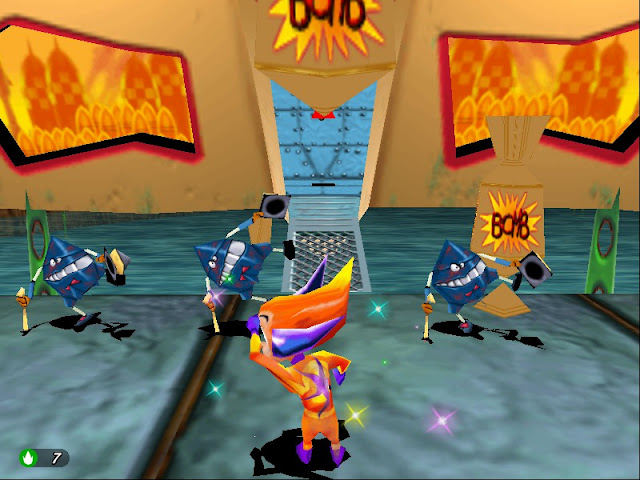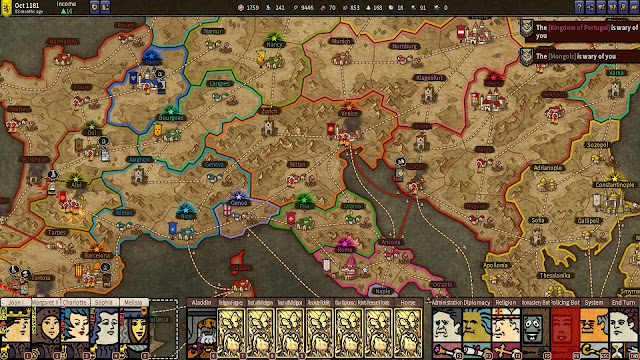Cathedral Review | A discrete product
The exploratory platformer/Metroidvania is a genre that has resisted the influences over the years and has remained one of the most popular game type. It is not difficult to understand, the mixture of exploration and fighting is a good combination, captivating and fun.
Cathedral is one of many products released in this genre.
Aesthetics
 |
Always keep your guard up |
The game uses pixel art graphics, with a style is reminiscent of titles released on 8-bit machines, but can be considered more as an evolution of that kind, similar to many platformer releases in recent years. On a negative note, the game engine struggles a lot during the most intense action scenes and makes everything lag.
The animations are done competently, without major slips or technical excellence.
There is no trace of a dubbing or sounds to simulate speech.
The soundtrack uses synthesized instruments, while it's not bad, I wish were used programs with modern sounds to create the music., the new/retro contrast might turn one nose, with the contradiction between visual and sound characteristics, but there are similar games that have managed to mix more complex music with pixel art graphics.
The various sounds are what you can expect, they are squeaky, nothing more to say on this front.
In short, the game has the visual and audio aspect strongly reminiscent of the third generation of video games, but more elaborate thanks to the use of refined techniques and modern programs, the soundtrack could have been done with other instruments besides the synthesizer, though.
Game Mechanics
 |
Equipping charms will grant different effects |
The point of any exploratory platformer/metroidvania game is based on two factors: the repeated exploration of various locations and skill/combat challenges on platforms. To implement these ideas and stimulate the game, the game uses elements of finding objects, solving puzzles, and fighting against creatures and bosses.
You will take possession of an unnamed knight, at first he will have some basic skills: jumping, attacking, a down attack and the use of an indestructible shield. As the adventure progresses, you will earn several tools, these tools expand the moves available to you, for example, the first one you get is a glove that can shoot arrows, it allows you to attack enemies from afar, but also to activate unreachable switches. At the end of the game, you will collect a total of 5 different tools, each with their own purpose and use case.
Nothing extraordinary, but a good thing is that you can unequip gadgets you don't need, saving you time as you cycle through active ones.
There are various missions to accomplish, both primary and secondary, to keep track of everything, you have a dedicated scroll, in it you can consult the notes on what to do. In case you still have doubts about where to go, a fortune-teller resides in the main village who will give you cryptic hints.
Despite being an exploratory platformer/metroidvania, the levels are not strictly interconnected, you will rarely find shortcuts or secret passages connecting to other areas, but there are many hidden rooms.
As for the quality, the levels are well made even if not memorable, there are hidden objects and paths that can only be unlocked after progressing through the main game, as per the norm.
One small thing that you may have but is not automatically enabled is the mini-map, by pressing the button on the left analog stick you can activate and deactivate it at will. Why isn't it enabled by default? I don't know, but it helps a lot in the exploration phases, speaking of maps, pay close attention to the edges, they often give a veiled clue as to how one can enter a room.
The game is not particularly difficult, the boss fights are challenging and need the right attention to defeat them. There are no difficulty selectors, the only thing that could give an extra challenge is an achievement that, to be obtained, you must complete the game without ever upgrading the armor.
If you find yourself stuck in a boss fight or a particularly difficult area, do a little exploration, you may find something useful, like some life-restoring flasks, these bottles are found by exploring and their effectiveness can be enhanced by paying merchants.
If you die you lose 10% of the money, which cannot be recovered in any way, but you can limit the punishment by collecting ouroboros scattered throughout the game, they reduce lost gold by one percent for each one you recover, down to a minimum of 5%.
When you die you return to the last checkpoint, represented by a statue of an angel, keep in mind that you will not come back to life with a full health bar, but it can be increased by finding or buying specific pieces of armor.
Let me give you an advice and buy the compass at the main village: it allows you to teleport to the last activated statue without needing to die. There is also another armor that, for each piece found, increases the chance of not taking any damage by one percent, up to a maximum of 10%.
A peculiar aspect are the charms, divided into three groups: magic, movement and combat. These charms grant certain effects based on what you equip and in which group, for example, one of the first you gain is a magic charm that allows you to control a ghost for about 10 seconds. The ghost can cause damage without taking any and it can move movable blocks, useful for puzzles, and the second magical charm allows you to glide. You can't equip multiple charms from the same group, you have to choose whether to have one or the other. Charms can be exchanged at altars scattered throughout the game.
This puts you in a position to carefully decide what to equip, as it will affect the moves available to you. True until you find the third charm of a group: it has the combined effects of the other two, making them obsolete. This also applies to movement and combat charms.
It's a very nice idea, even if a bit superficial.
Gold coins are the main currency of the game, earned by defeating enemies, opening chests and destroying fake blocks containing precious gems. Collected coins can be stored by merchants in villages. And the deposit is shared, so if you give the money to a merchant in one place, you can withdraw it at a different one.
Collecting 90% of the collectibles, I finished the game in 20 hours.
In summary, except for the charm system, the game has mechanics and a structure typical of other explorative platformers/metroidvanias released in the last few years.
All of this is done competently, but also without uniqueness that can make it stand out from the norm.
Narrative
 |
The only piece of lore that you will receive |
You wake up dizzy, you don't know who you are, you don't know where you are, all you know is that you have to get out of this cathedral. In your desperate escape attempt, you come across a ghost, it seems to ignore you, but then decides to join you. During your escape, you come across a portal that it is said to contain Ardur, a dark lord banished from this plane of existence but never completely defeated. You swear that you will find all the keys to open the portal and finish Ardur once and for all.
From here, a series of events will follow until the end of the game.
The incipit is superficial, used just to give us a motivation to play. And apart from a very small twist at the end, there are no big jolts in the narrative field.
There are a couple of side stories you can follow, they provide micro narratives unrelated to the main storyline, but they are not fully developed, they are used more to give something to do than to be explored.
There is no characterization of the characters in any way, at most a line of dialogue or two from random NPCs.
The lore bits are few and far between, the only hints you encounter are a video shortly after the start, a few sentences from the NPCs and some texts containing references to local areas and nothing more.
In conclusion, this is a game much more devoted to action than to the telling of a story.
Recommendation:
Cathedral won't revolutionize the explorative platformer/metroidvania sphere, with its strong artistic inspiration to retro titles and a lack of a solid story, but it is capable of entertaining right up to the end credits.
And that's enough for me.




Comments
Post a Comment